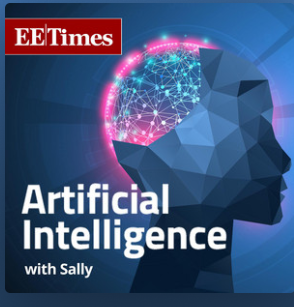
“Click the blue text above to follow us”

In the context of the rapid development of artificial intelligence and the Internet of Things, although we have now entered 2025, “Edge AI” and IoT devices have become buzzwords. However, why has the potential of AI in IoT not been fully realized? What is hindering the widespread adoption of powerful technologies for small and battery-powered devices? This article explores the key factors hindering the proliferation of AI in IoT through an in-depth conversation with industry expert Sam Geha, as well as how to promote IoT towards a broader future through ecosystem development, hardware innovation, and security assurance.

This article is adapted from EE Times’ “AI with Sally” (interview), authored by Sally Ward-Foxton. The content has been appropriately condensed and reflects the author’s personal views, aiming to provoke thought among readers. The content does not represent the platform’s stance. If there are any copyright issues, please contact us for resolution.
Venture Capital Innovate X
01
Background Overview
With the increasing popularity of smart IoT and edge computing concepts, Edge AI has become a hot topic in the industry. However, despite the frequent discussions around “Edge AI” and related IoT devices, there are still many challenges in practical applications. Sam Geha, Executive Vice President of IoT Computing and Wireless Business at Infineon Technologies, was invited to share insights on the development prospects of AI in the IoT field. In the end-device market, both industrial IoT and consumer IoT are still relatively cautious about adopting AI. Infineon is well-known for its microcontrollers and has recently launched a family of AI system-on-chip called PSOC. This series of chips integrates ARM and Infineon’s self-developed AI accelerators, aimed at supporting IoT, small sensor nodes, and various battery-powered devices. Meanwhile, Infineon has recently acquired a Swedish startup, Imagimob, which focuses on micro machine learning toolchains and platform solutions, to enhance Infineon’s AI product line.

Image Source:EE Times
02
Interview Summary
Building Ecosystems and Development Tool Platforms
Currently, end customers and developers generally lack professional skills in AI model development, which poses significant challenges for the implementation of new technologies. Sam Geha pointed out that IoT applications rely not only on hardware, but most end customers do not possess the skills of data scientists and model developers, and thus require a comprehensive software and tool support system. To address this pain point, Infineon has launched the Deep Craft platform, which provides ready-made models, custom development tools, and data collection and optimization solutions to help developers overcome technical barriers and quickly build and deploy AI models. Only when this ecosystem is gradually improved can the future of IoT truly achieve breakthroughs.
Hardware Innovation and Low-Power Design
Edge AI applications require efficient data processing on small and battery-powered devices, while traditional MPUs struggle to meet these demands in terms of cost and energy consumption. Infineon’s solution is the MCU-based PSOC Edge series, which achieves a balance between high performance and low power consumption by integrating the ARM Ethos U55 accelerator, Cortex M55, and low-power modes (Cortex M33 and NN Light). Sam Geha explained that this innovative hardware architecture not only significantly reduces system costs but also greatly improves device energy efficiency, ensuring rapid response and high reliability, providing a solid foundation for the intelligent processing capabilities of IoT devices at the edge.
How to Ensure the Security of IoT?
As IoT devices are widely used across various fields, the issue of data security has become particularly prominent. Infineon leverages years of experience in credit card chips and passport security to implement PSA Level 4 security certification in PSOC Edge products, providing comprehensive protection for machine learning models. Sam Geha emphasized that only by ensuring that data (especially high-value AI models with significant R&D investment) is not subject to hacking or theft can IoT devices gain user trust in critical scenarios (such as facial recognition, voice activation, and device control), thereby promoting the application of AI technology in a broader range of fields.
Application Prospects and Future Outlook – How IoT Will Change Our Lives
From smart homes and industrial automation to automotive systems and wearable devices, Edge AI is injecting new vitality into various industries. Sam Geha detailed several specific application scenarios:
Smart Homes: Through voice and visual recognition, AI can optimize the usage time of dryers and adjust the operational status of appliances, achieving a truly intelligent home life.
Industrial Manufacturing: The application of Edge AI in real-time monitoring, fault warning, and equipment maintenance can significantly reduce unplanned downtime and production losses.
Transportation and Automotive: With advanced human-machine interfaces and security certifications, future vehicle start and control systems will be safer and more efficient.
New Wearable Devices: Wearable devices, including smart glasses, will leverage low-power, high-performance Edge AI technology to achieve more applications in real-world scenarios.
03
Summary and Outlook
Sam Geha concluded that the low latency, high energy efficiency, and excellent security brought by Edge AI will become the three core driving factors for the development of IoT. The future of IoT lies in the deep integration of smart technology and hardware technology. Building a complete ecosystem, achieving dual improvements in hardware performance and energy efficiency, and ensuring the security of critical data are key to promoting the widespread application of Edge AI. As technology continues to mature and costs continue to decline, AI applications in the IoT field will experience explosive growth, fundamentally changing people’s production and lifestyle.

Interactive Topics
1/ Which Edge AI technology do you think has the most potential to disrupt the current IoT ecosystem?
2/ What are your expectations or suggestions for the low-power, high-security AI chips promoted by Infineon? Please leave your comments for discussion.
Translation: Qinyu Ji
Formatting: Fengjia Ren
Feel free to share your thoughts in the comments section~


“Follow us”
WeChat Official Account丨 Venture Capital Innovate X